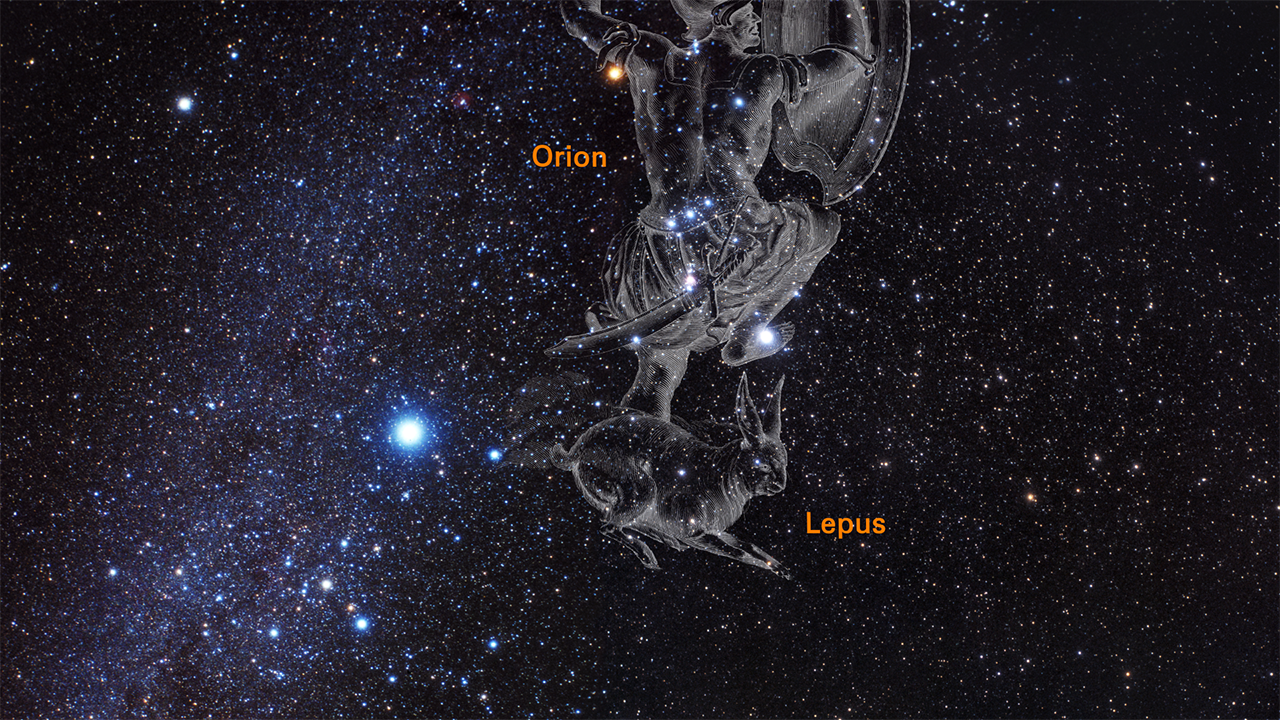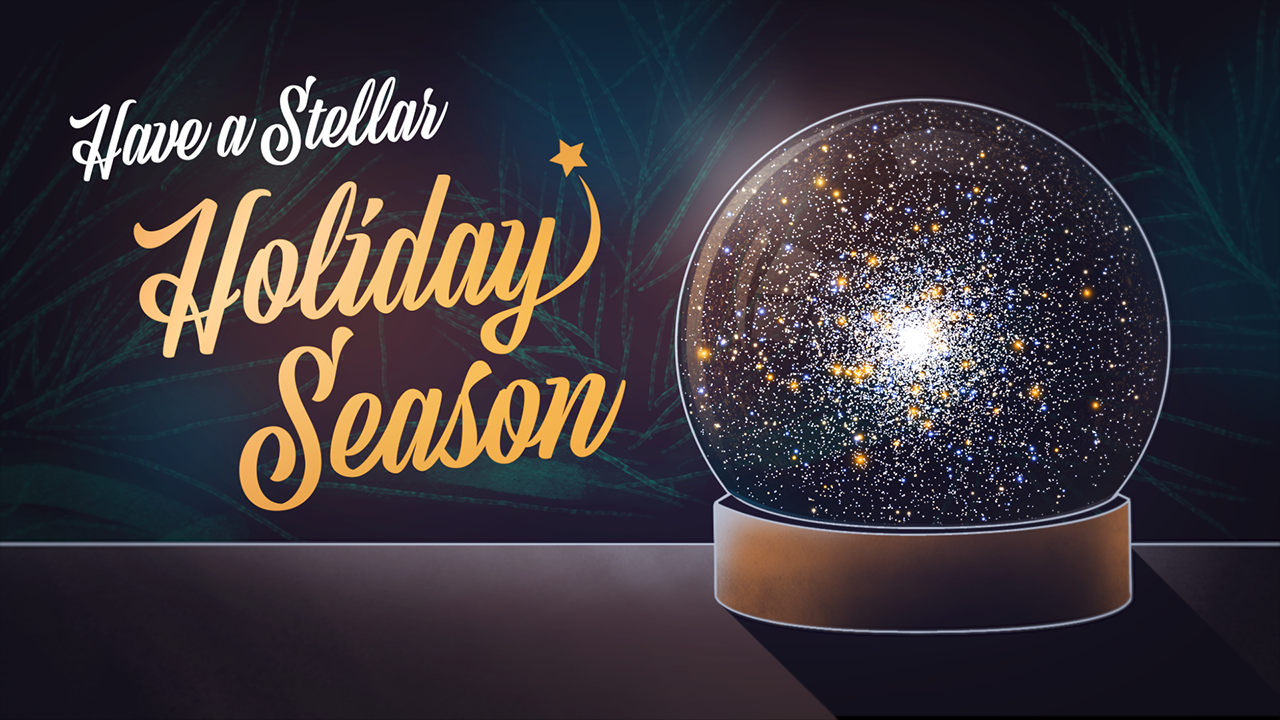1 min read
Globular Cluster Messier 79 (M79, NGC 1904) – Cropped

It’s beginning to look a lot like the holiday season in this NASA Hubble Space Telescope image of a blizzard of stars, which resembles a swirling snowstorm in a snow globe.
The stars are residents of the globular star cluster Messier 79, or M79, located 41,000 light-years from Earth, in the constellation Lepus. The cluster is also known as NGC 1904.
Globular clusters are gravitationally bound groupings of as many as 1 million stars. M79 contains about 150,000 stars packed into an area measuring only 118 light-years across. These giant “star-globes” contain some of the oldest stars in our galaxy, estimated to be 11.7 billion years old.
Most globular clusters are grouped around the central hub of our pinwheel-shaped galaxy. However, M79’s home is nearly on the opposite side of the sky from the direction of the galactic center. One idea for the cluster’s unusual location is that its neighborhood may contain a higher-than-average density of stars, which fueled its formation. Another possibility is that M79 may have formed in an unusual dwarf galaxy that is merging with the Milky Way.
In the Hubble image, Sun-like stars appear yellow. The reddish stars are bright giants that represent the final stages of a star’s life. Most of the blue stars sprinkled throughout the cluster are aging “helium-burning” stars. These bright blue stars have exhausted their hydrogen fuel and are now fusing helium in their cores.
A scattering of fainter blue stars are “blue stragglers.” These unusual stars glow in blue light, mimicking the appearance of hot, young stars. Blue stragglers form either by the merger of stars in a binary system or by the collision of two unrelated stars in M79’s crowded core.
The star cluster was discovered by Pierre Méchain in 1780. Méchain reported the finding to Charles Messier, who included it in his catalog of non-cometary objects. About four years later, using a larger telescope than Messier’s, William Herschel resolved the stars in M79, and described it as a “globular star cluster.”
The image is a combination of observations taken in 1995 and 1997 by Hubble’s Wide Field Planetary Camera 2. The red, green, and blue colors used to compose the image represent a natural view of the cluster.
The Hubble Space Telescope is a project of international cooperation between NASA and ESA (European Space Agency). NASA's Goddard Space Flight Center in Greenbelt, Maryland, manages the telescope. The Space Telescope Science Institute (STScI) in Baltimore, Maryland, conducts Hubble science operations. STScI is operated for NASA by the Association of Universities for Research in Astronomy, Inc., in Washington, D.C.
About the Object
- R.A. PositionR.A. PositionRight ascension – analogous to longitude – is one component of an object's position.05:24:10.59
- Dec. PositionDec. PositionDeclination – analogous to latitude – is one component of an object's position.-24:31:27.3
- ConstellationConstellationOne of 88 recognized regions of the celestial sphere in which the object appears.Lepus
- DistanceDistanceThe physical distance from Earth to the astronomical object. Distances within our solar system are usually measured in Astronomical Units (AU). Distances between stars are usually measured in light-years. Interstellar distances can also be measured in parsecs.41,000 light-years away from Earth
- DimensionsDimensionsThe physical size of the object or the apparent angle it subtends on the sky.Image is 2.2 arcmin across (about 26 light-years)
About the Data
- Data DescriptionData DescriptionProposal: A description of the observations, their scientific justification, and the links to the data available in the science archive.
Science Team: The astronomers who planned the observations and analyzed the data. "PI" refers to the Principal Investigator. - InstrumentInstrumentThe science instrument used to produce the data.WFPC2
- Exposure DatesExposure DatesThe date(s) that the telescope made its observations and the total exposure time.Oct. 1995 and Apr. 1997
- FiltersFiltersThe camera filters that were used in the science observations.F336W, F439W, F555W
- Object NameObject NameA name or catalog number that astronomers use to identify an astronomical object.Messier 79, M79, NGC 1904
- Object DescriptionObject DescriptionThe type of astronomical object.Globular Cluster
- Release DateDecember 12, 2017
- Science ReleaseHubble’s Celestial Snow Globe
- Credit

These images are a composite of separate exposures acquired by the WFPC2 instrument on the Hubble Space Telescope. Several filters were used to sample various wavelength ranges. The color results from assigning different hues (colors) to each monochromatic (grayscale) image associated with an individual filter. In this case, the assigned colors are: Blue: F336 + F439 Green: F336 + F439 + F555 Red: F555

Related Images & Videos

Globular Cluster Messier 79 (M79, NGC 1904)
It’s beginning to look a lot like the holiday season in this NASA Hubble Space Telescope image of a blizzard of stars, which resembles a swirling snowstorm in a snow globe. The stars are residents of the globular star cluster Messier 79, or M79, located 41,000 light-years from...

Stellar Greetings from Globular Cluster M79
This video starts with a wide-field view of the sky covering the constellations of Orion, the hunter, and Lepus, the hare. The view zooms down to the relatively tiny field of the Hubble image of globular star cluster Messier 79 (M79). The sequence then dissolves to a...

M79 Snow Globe Holiday Greeting
This special holiday snow globe greeting is a visualization of a rotating star cluster that provides three-dimensional perspective of globular cluster Messier 79 (M79). The simulated star cluster is modeled to reflect the number, color, and distribution of stars in a Hubble...
Share
Details
Claire Andreoli
NASA’s Goddard Space Flight Center
Greenbelt, Maryland
claire.andreoli@nasa.gov
































